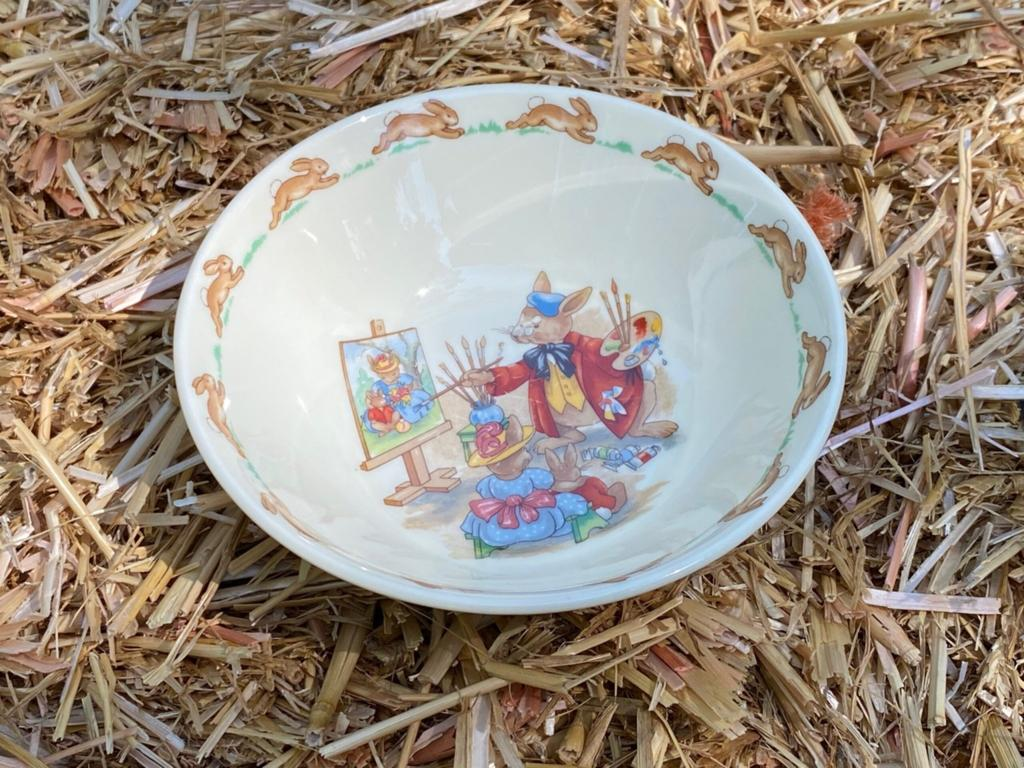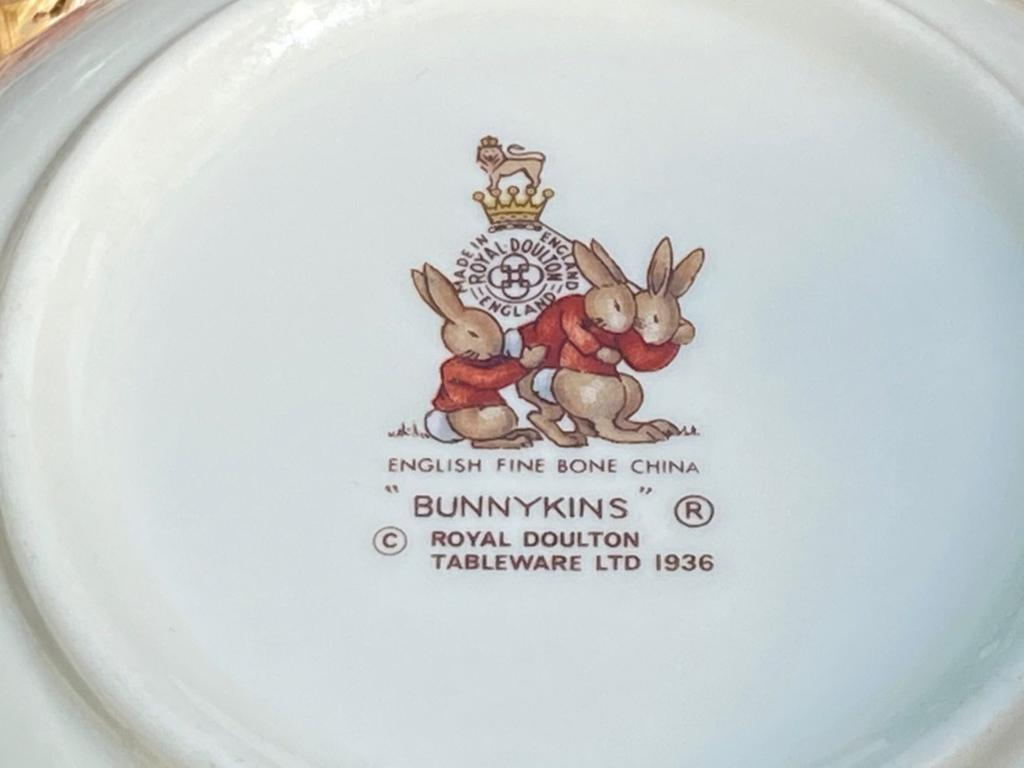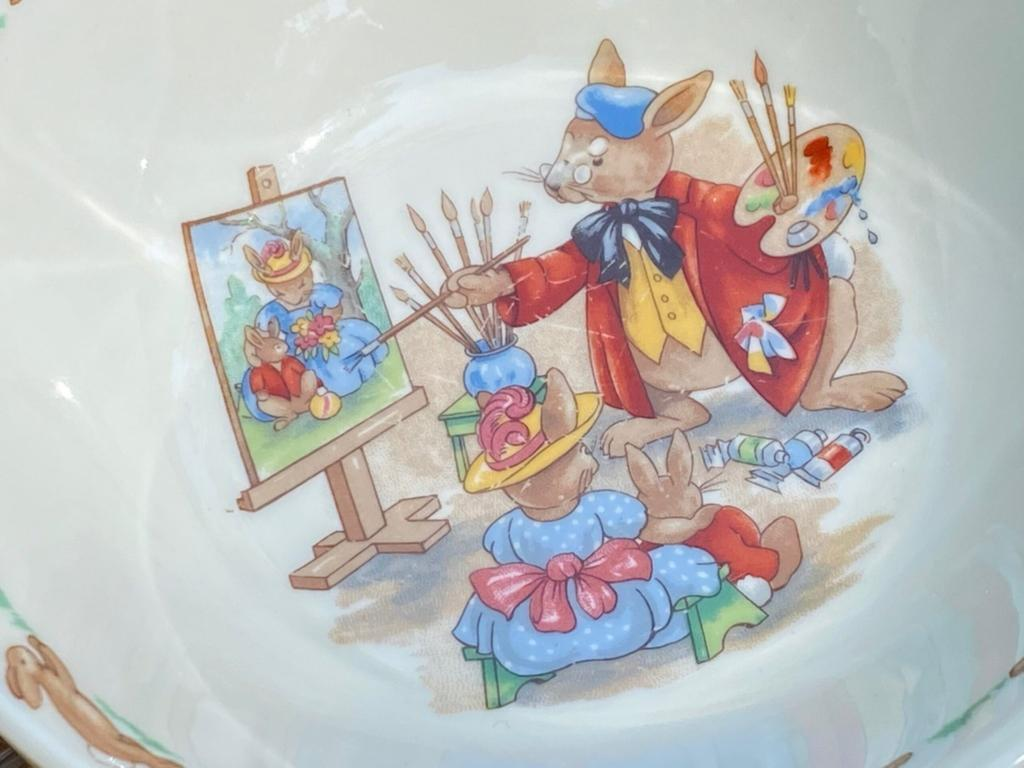Bunnykins tableware from the 1970s is unsafe to use for food, a health expert warns
- Replies 25
Members, we were just wondering whether anyone here had a tradition of collecting tiny rabbit figurines in the past. Perhaps a present for a child's first birthday or their baptism?
What about those ceramic dish sets or cups decorated with cute bunnies on them; does anyone remember using any of those?
If that's the case, it very well could have been a piece from the Royal Doulton Bunnykins collection!
Almost every Aussie home used to have at least one piece of Royal Doulton Bunnykins ware, such as a bowl, plate, or cup featuring the lovable critters. Gifts of these kinds were always well received by kids!
For decades, families have used the decorated tableware as a present for birthdays, to welcome new babies, or simply as a collector's item for adults.
Even now, there are some pieces that are passed down from one generation to the next. (Some have even been auctioned off for jaw-dropping prices!)

The health risks of vintage Royal Doulton Bunnykins sets have been raised by a renowned US expert. Credit: Tamara Rubin/Lead Safe Mama.
But now, a respected child health advocate, who is also a mum whose children have fallen victim to lead-poisoning, has discouraged people from using the vintage sets with food, warning that they can have high levels of lead and arsenic.
Tamara Rubin is widely renowned for the work she has done to avoid lead poisoning in households, and when she tested the popular vintage items, she discovered some concerning results.
When Ms Rubin tested a Bunnykins bowl, she found that the centre of the food surface had 80,000 ppm (parts per million) of lead, which is almost 900 times the safe level. There was also 1,847 ppm of arsenic in it.
Comparatively, this is a big jump from the previous time she looked at an old Bunnykins piece for analysis. In 2019, tests showed that the bowl had just under 62,000 ppm of lead.
'Vintage Bunnykins wares are not safe for food use and especially not safe for children to use,' said Tamara in a recent post on her website.

The vintage pieces should not be used to serve food. Credit: Tamara Rubin/Lead Safe Mama.
Ms Rubin has made a name for herself by revealing alarming toxicity levels in vintage Tupperware, and now, she is equally dedicated to enlightening the public about vintage Bunnykins.
'These Bunnykins posts are really important to share to raise awareness and keep them out of the hands of a new generation of babies and small children,' she said.
'It seems that nearly everyone of a certain age still has (or used to have) these dishes, and the people who have them often let their children use them (as they have expressly intentionally saved them from their childhood for their children or grandchildren to use),' she went on to say.
For many years, glazes and embellishments on ceramic ware almost always contained lead. It provided a smooth, glass-like quality when used in glazes, allowing vivid colours and intricate patterns to shine through.
But it is a poisonous substance that can affect people of any age, but children, pregnant women, and unborn babies are especially at risk. Lead builds up in your body, so even small levels can eventually be harmful.

Ms Rubin says that instead of putting them on food, they would make a beautiful keepsake if they were framed in a shadow box. Credit: Tamara Rubin/Lead Safe Mama.
Ms Rubin issued a warning that many of the older sets would not be regulated and could be sold online without a lead warning since they are considered vintage. According to her research, she suspects that lead was used in manufacturing until at least 2010.
So folks, if you have some pieces at home and you find them hard to throw away, Ms Rubin advises that rather than putting them to use with food, you should instead put them in a shadow box and have them framed so that they can be kept as a lovely keepsake instead.
We sincerely hope that you find this post to be informative and helpful, members! If you have more to share with us, please do so in the comments!
What about those ceramic dish sets or cups decorated with cute bunnies on them; does anyone remember using any of those?
If that's the case, it very well could have been a piece from the Royal Doulton Bunnykins collection!
Almost every Aussie home used to have at least one piece of Royal Doulton Bunnykins ware, such as a bowl, plate, or cup featuring the lovable critters. Gifts of these kinds were always well received by kids!
For decades, families have used the decorated tableware as a present for birthdays, to welcome new babies, or simply as a collector's item for adults.
Even now, there are some pieces that are passed down from one generation to the next. (Some have even been auctioned off for jaw-dropping prices!)
The health risks of vintage Royal Doulton Bunnykins sets have been raised by a renowned US expert. Credit: Tamara Rubin/Lead Safe Mama.
But now, a respected child health advocate, who is also a mum whose children have fallen victim to lead-poisoning, has discouraged people from using the vintage sets with food, warning that they can have high levels of lead and arsenic.
Tamara Rubin is widely renowned for the work she has done to avoid lead poisoning in households, and when she tested the popular vintage items, she discovered some concerning results.
When Ms Rubin tested a Bunnykins bowl, she found that the centre of the food surface had 80,000 ppm (parts per million) of lead, which is almost 900 times the safe level. There was also 1,847 ppm of arsenic in it.
Comparatively, this is a big jump from the previous time she looked at an old Bunnykins piece for analysis. In 2019, tests showed that the bowl had just under 62,000 ppm of lead.
'Vintage Bunnykins wares are not safe for food use and especially not safe for children to use,' said Tamara in a recent post on her website.
The vintage pieces should not be used to serve food. Credit: Tamara Rubin/Lead Safe Mama.
Ms Rubin has made a name for herself by revealing alarming toxicity levels in vintage Tupperware, and now, she is equally dedicated to enlightening the public about vintage Bunnykins.
'These Bunnykins posts are really important to share to raise awareness and keep them out of the hands of a new generation of babies and small children,' she said.
'It seems that nearly everyone of a certain age still has (or used to have) these dishes, and the people who have them often let their children use them (as they have expressly intentionally saved them from their childhood for their children or grandchildren to use),' she went on to say.
For many years, glazes and embellishments on ceramic ware almost always contained lead. It provided a smooth, glass-like quality when used in glazes, allowing vivid colours and intricate patterns to shine through.
But it is a poisonous substance that can affect people of any age, but children, pregnant women, and unborn babies are especially at risk. Lead builds up in your body, so even small levels can eventually be harmful.
Ms Rubin says that instead of putting them on food, they would make a beautiful keepsake if they were framed in a shadow box. Credit: Tamara Rubin/Lead Safe Mama.
Ms Rubin issued a warning that many of the older sets would not be regulated and could be sold online without a lead warning since they are considered vintage. According to her research, she suspects that lead was used in manufacturing until at least 2010.
So folks, if you have some pieces at home and you find them hard to throw away, Ms Rubin advises that rather than putting them to use with food, you should instead put them in a shadow box and have them framed so that they can be kept as a lovely keepsake instead.
We sincerely hope that you find this post to be informative and helpful, members! If you have more to share with us, please do so in the comments!







